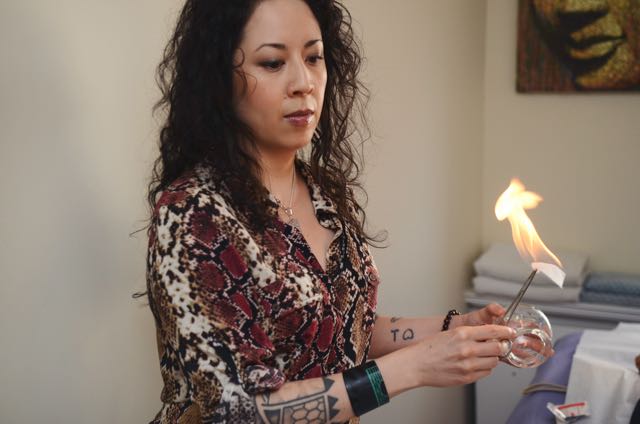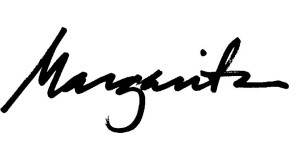Curious About Cupping? Here’s What You Need To Know
What do 19-time Olympic gold medalist Michael Phelps, U.S. men’s gymnast Alex Naddour, Jennifer Aniston, and Gwyneth Paltrow all have in common?
They are among the many prominent athletes and celebrities who proudly sport their red and purple colored circles that dot their backs and shoulders.
But, what exactly are these marks that look like battle scars from wrestling with a giant octopus? Are they the result of some latest health fad?
In fact, this is an ancient healing technique called cupping, which is a therapy that involves applying suction to the skin to move Blood and Qi, as well as remove stagnation of any kind from the body.
It’s a technique that’s been used in China for thousands of years, and is a part of Traditional Chinese Medicine (TCM).
According to the book Traditional Chinese Medicine Cupping Therapy by Ilkay Zihni Chirali, “The earliest records of cupping is in Bo Shu (an ancient book written on silk), which was discovered in an ancient tomb of the Han Dynasty in 1973 (Chen Bin, Dr He Chong, personal communications, 1995).” (Ilkay Zihni Chirali, Traditional Chinese Medicine Cupping Therapy (London: Churchill Livingstone, 2001), 3.)
Here’s how cupping works: the practitioner creates a vacuum in the cup, by lighting an alcohol swab and inserting it into the cup, then quickly removing the lit swab and placing the mouth of the cup onto the skin, creating a suction effect on the area treated. For this reason, cupping is also called fire cupping.
The cups are left on for a couple of minutes (practitioners are careful not to leave them on too long, or else it could be too draining for the patient), then removed.
What’s left are the circle marks from the cups – purple or dark pink bruises are left if there was a lot of stagnation in that area of the body (the darker the bruise, the more stagnation present), or light pink if the stagnation wasn’t as significant. Marks disappear after a few days, and are often more significant on the first cupping treatment, since with all following cupping treatments, the circulation is improving and stagnation is resolving.
The earliest instruments used in cupping were cattle horns, hence it’s name in ancient times in China as “horn method”. (Cheng Xingnong, Chinese Acupuncture and Moxibustion (Beijing: Foreign Languages Press, 1999), 360.)

Margarita mid-cupping. Photo from the author’s personal collection.
Bamboo and earthenware were also used. However, globe-shaped glass cups are more commonly used today, mostly because it’s easier to clean (clean clinics are a must for all modern TCM practitioners!), and you can also see the flame so as to avoid burning the patient.
Nowadays, other ways of cupping, such as using vacuum cups with a pump (which takes the place of the fire to create the vacuum effect), is sometimes used instead of fire cupping.
Although cupping has its earliest roots recorded in China, and continues to be widely practiced there today as part of TCM (and is used all over the world now by TCM practitioners), it is also used in rural parts of Africa, as well as parts of Asia, such as Japan, India, and the Philippines, and in many Muslim countries, as well. It was found to be practiced by natives of America, and the inhabitants of the South Sea Islands (Chirali, Traditional, 9.)
In addition, the ancient Egyptians were the first to use cupping therapy systematically. (Chirali, Traditional, 4.) When tracing the art of cupping through history, the ancient art was transferred by the Egyptians to the Greeks, which influenced its expansion into areas such as Turkey, Spain, and Italy.
Cupping has been continually practiced through the ages by TCM practitioners, and its resurgence in popularity has been mostly due to the fact that more people have access to “alternative healthcare” (although, with the roots of TCM being over 2,000 years old, it appears to be one of THE original forms of healthcare, in my humble opinion!)
Cupping is great for many health issues, such as:
- Abdominal pain
- Dysmenorrhea (painful periods)
- Constipation
- Asthma
- Cough
- Fevers
- Hypertension
- Facial paralysis due to stroke
- Tiredness
- Varicose or broken veins
- Atrophy syndrome
- Other physical, spiritual, and even emotional imbalances due to what TCM practitioners term Internal and External “Evil Qi”
…to name a few!
But the most popular reason for cupping, and what it’s most known for? Treating muscular and joint pain, especially in the back, shoulders, and legs.
Cupping and acupuncture have now become (not so) secret weapons for athletes who are looking to recover, and heal, faster. Thus, having an edge on their competition, and helping them step up (or continue) their training.
What does it feel like?
You will likely feel the strong suction of the cups, but most people find it very relaxing. Personally, I LOVE getting cupping treatments. I feel like they’re sucking out the pathogens from my body (which they are!) I always sleep like a log the night I receive cupping treatments.
There are also various types of cupping, but the more commonly practiced ones are:
- Fixed (Stationary) Cupping – This is when cupping is performed on specific areas of the body, and left there for a few minutes. Since this is a strong treatment, creating strong suction, it really brings up the stagnation in the body, and is not recommended for individuals with a weak constitution, because it strongly drains the stagnation from the body.
- Moving Cupping (Tui Guan Fa) – This is just as it sounds. Before the cups are applied to the body, a lubricant is applied to the area to be treated. After applying the cups to the body, the practitioner moves the cups up and down the channel. Moving cupping is more typically used on the back, going up and down the Urinary Bladder channels. This, too, is a draining technique to reduce the stagnation in the body.
- Flash (Empty) Cupping (Shan Guan Fa) – Flash cupping is known for its speed during the application. The practitioner places many cups on at once. The cups are only in place for a short amount of time (usually less than a minute), then removed, and reapplied. This technique happens for a few minutes, and is meant to stimulate the Qi & Blood enough, but not enough to drain. Because of this, it’s considered a more tonifying version of cupping.
There are other cupping types, such as Needle Cupping (where a single acupuncture needle is inserted before cupping the area), Moxa (Hot Needle) Cupping (where the smoking, warming Chinese herb, moxa, is placed on top of a single acupuncture needle before being cupped), and Bleeding Cupping (where a Plum Blossom Needle or lancet is used to draw a few drops before cupping).
Times when cupping is NOT recommended:
- When a patient has skin ulcers, edema, high fever, convulsions, or treatment to the abdominal or sacral area when pregnant (treating other areas of pregnant patients, such as the thighs, are common, however!)
- On an area of large blood vessels
- If the patient has a weak constitution (fire cupping will be too draining for individuals with weak constitutions, but flash cupping may be helpful)
Important cupping tip: DO NOT try this at home! If you want to receive an optimal cupping treatment, make sure you receive it from highly trained and knowledgeable practitioners, such Licensed Acupuncturists and Chinese Medicine Doctors!
Have you ever had a cupping treatment?
Share it with us in the comments, below!
For the love of cupping,

Sources:
- Xingnong, Cheng. Chinese Acupuncture and Moxibustion. Beijing: Foreign Languages Press, 1999.
- Chirali, Ilkay Zihni. Traditional Chinese Medicine Cupping Therapy. London: Churchill Livingstone, 2001.
Copyright © 2016 by Alcantara Acupuncture & Healing Arts. All rights reserved. You may quote, copy, translate and link to this article, in its entirety, on free, non-donation based websites only, as long as you include the author name and a working link back to this website. All other uses are strictly prohibited.
All information on this website is my own opinion, and not to be taken as medical advice. Reliance on any information provided on this website is solely at your own risk. Please refer to your medical practitioner before making any medical decisions.









7 Comments
For Everyone Wondering WTH Cupping Is During The Olympics - Superior Physical Therapy
August 9, 2016[…] practice of cupping has been done in China for thousands of years and Eastern medicine suggests that it also relieves stagnation of Qi (vital energy or life force) and blood inside the body. […]
Amirah
August 9, 2016Cupping has been an ancient practice in the Muslim world too. The prophet Mohammad (peace be upon him) had cupping done and advocated it as a cure to all illnesses. It can cure spiritual disease as well as physical. It is known that if there are bubbles in the blood, or steam in the cup are known to be signs of evil eye or jinn possession, so cupping is known as affective for these problems also
Margarita Alcantara, M.S.Ac., L.Ac., Reiki Master/Teacher
August 9, 2016Hi Amirah,
Thank you for pointing that out! Yes, that is absolutely right that cupping has been an ancient practice in the Muslim world, as well. I will revise the article to reflect that. In Chinese Medicine, there is a similar understanding of evil releasing from the blood and channels. So interesting how there’s a comparable view across different cultures and countries.
Blessings,
Margarita
Michele
May 12, 2018Do you have to be a massage therapist to do cupping?
For Everyone Wondering WTF Cupping Is During The Olympics « Fribliss
August 9, 2016[…] practice of cupping has been done in China for thousands of years and Eastern medicine suggests that it also relieves stagnation of Qi (vital energy or life force) and blood inside the body. It […]
Melody Allen
June 3, 2017Do I need to be a massage therapist to do cupping. I had a license but did not renew it cuzz I was doing more sport therapy
Margarita Alcantara, M.S.Ac., L.Ac., Reiki Master/Teacher
June 4, 2017Hi Melody,
I can’t speak on massage therapy, since I’m an acupuncturist. However, cupping is best performed by a Licensed Acupuncturist, since it is a Traditional Chinese Medicine modality, so the training is more optimal.
Best,
Margarita